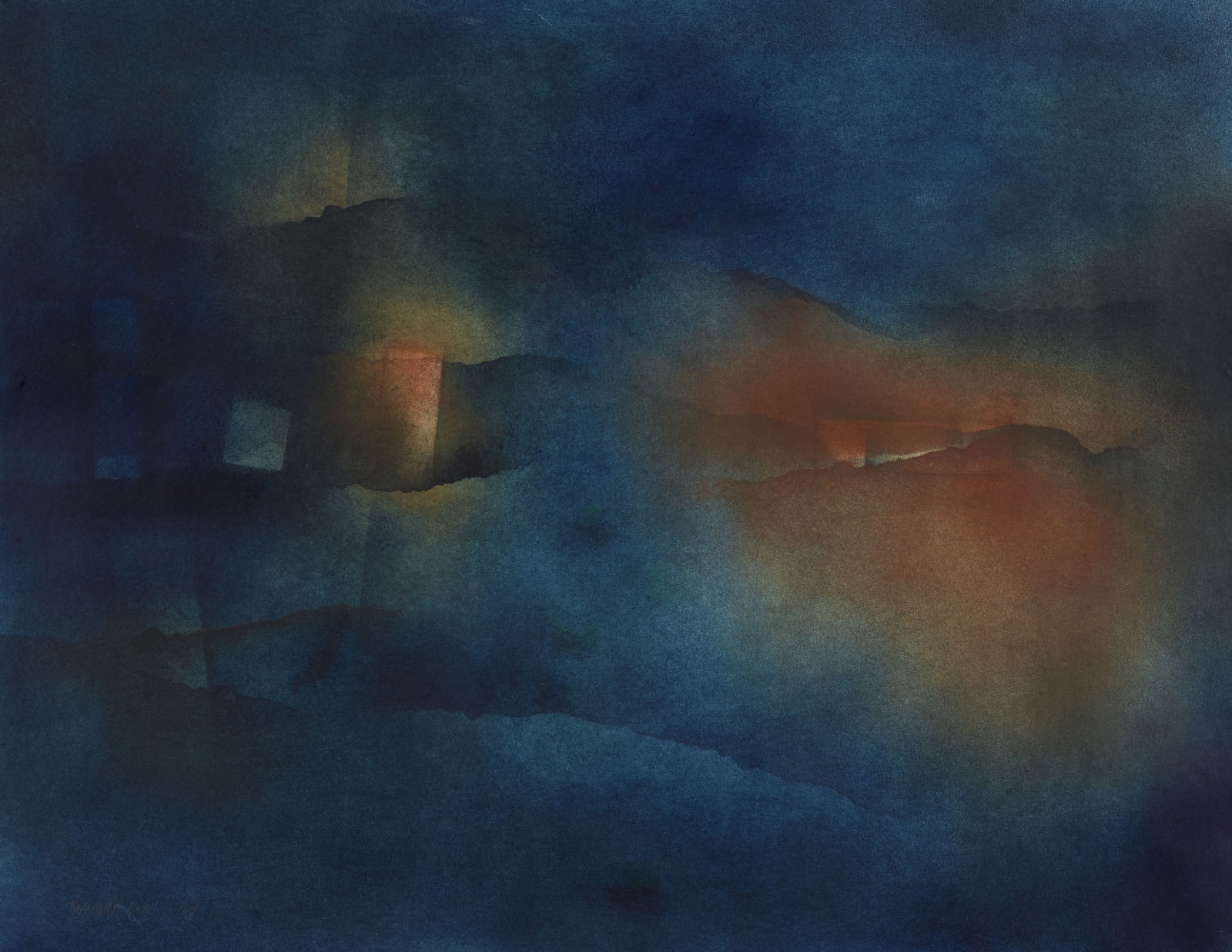Norman Lewis American, 1909-1979
48.3 x 61 cm
As noted by Ruth Fine: "Like many artists, Lewis created some of his most compelling and experimental compositions on paper due to this surface's availability in substantial quantities, diverse colors and textural properties, lightweight transportability, and relatively low cost. His works on paper range from quickly set-down quotidian observations to heavily worked painterly compositions of deep imaginative power. They move from Lewis's concerns with the human figure and the architecture of the city to his engagement with far-reaching abstractions that emerge from his interest in music, ritual practice, and forms in nature."
"Lewis's art is difficult to describe in a summary fashion. Its development neither followed a linear path, nor ever arrived at a single signature style, as did the work of most of his better-known contemporaries, such as Barnett Newman (1905-1970) and Jackson Pollock (1912-1956). Rather, Lewis simultaneously explored multiple motifs in diverse media. As new subjects and formal ideas were added, earlier concern remained in play. Another reason the work is difficult to categorize is his emphatic distinction between artistic integrity and socio-political activism and the manner, which shifted over time, in which his belief in the separation of these two concerns is manifested in his art." - Ruth Fine, Procession: The Art of Norman Lewis
"The most consistent thread in Lewis's art from the 1930s through the 1970s is his concern with artistic process and his search for distinctive and expressive ways to investigate the materials and techniques of his profession: the spiritual in the material." - Ruth Fine, Procession: The Art of Norman Lewis
Provenance
The artist; toPrivate collection, California; to
[June Kelly Gallery, New York]; to
Private collection, New York, until 2021

